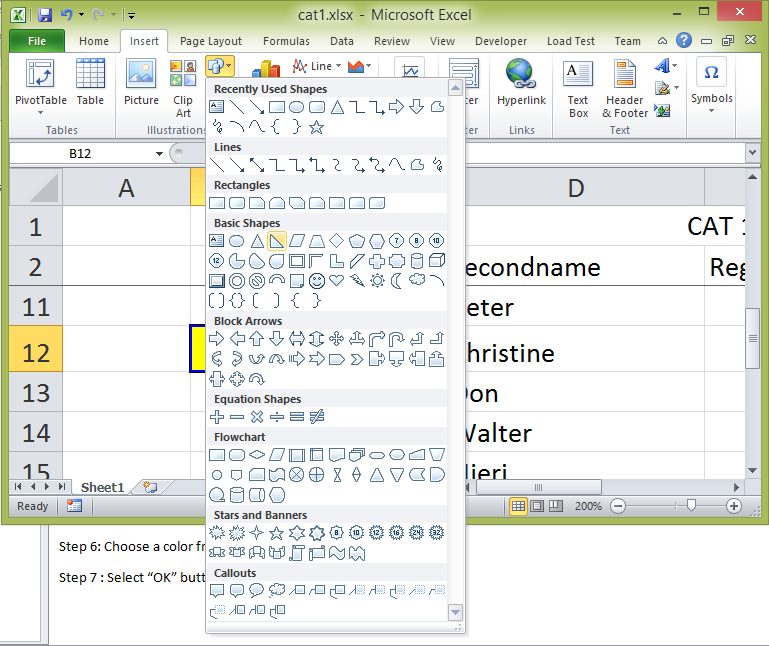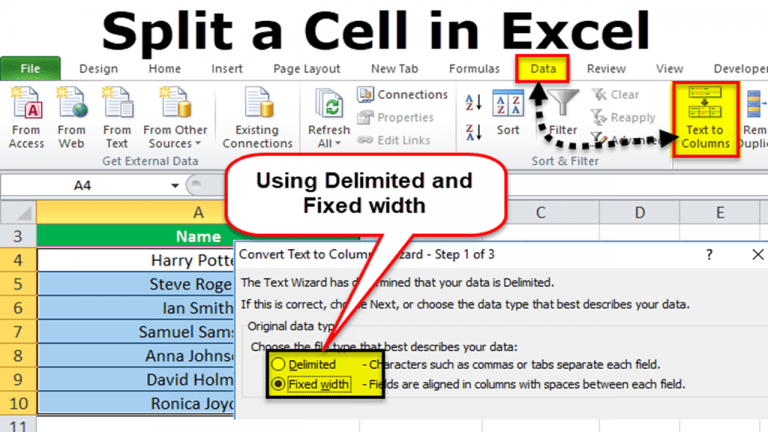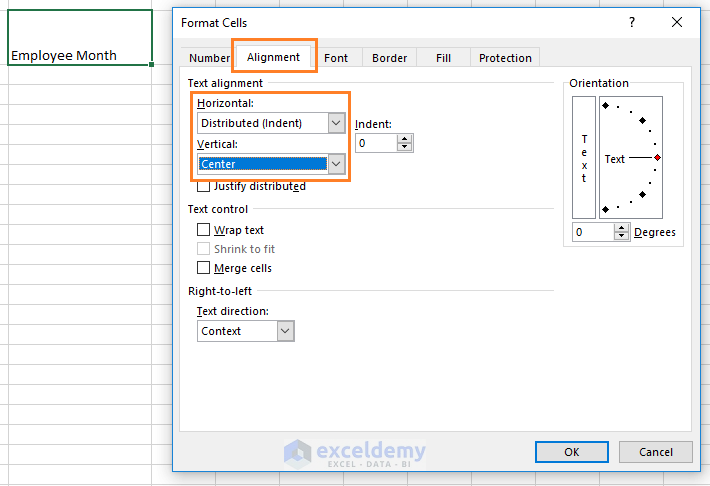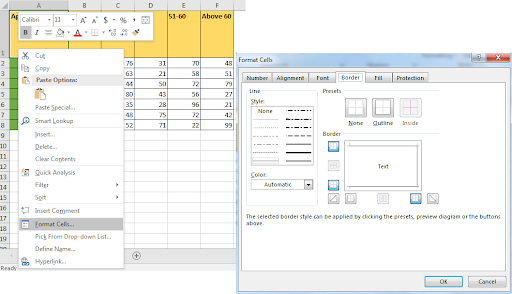
756 using the Real Statistics function described next.

Which is slightly higher than the result that would be obtained if we assumed an even number of questions, i.e. 6 on a 2-3 split of a 7 question test, then c = 2(.4)(.6) =. Note that if a test has an odd number of items 2 n + 1, then n/(2 n+1), and soįor example, if we obtain a correlation coefficient of. Note that if the two halves are equal, then c = 2(.5)(.5) =. Where c = 2 p(1– p) where p = the proportion of the test due to the first half. If not, then we can use the following formula (provided r ≠ ☑): This version of the Spearman-Brown correction works properly when the two halves have equal length. This result shows that the test is quite reliable.
#MICROSOFT EXCEL SPLIT CELLS IN HALF FULL#
To get a better estimate of the reliability of the full test, we apply the Spearman-Brown correction, namely: One problem with the split-half reliability coefficient is that since only half the number of items is used the reliability coefficient is reduced. See Basic Concepts of Correlation for more information about the correlation coefficient r. If it is high then the questionnaire is considered to be reliable.

The statistical test consists of looking at the correlation coefficient (cell G3 of Figure 1). Determine whether the test is reliable by using the split-half methodology.įigure 1 – Split-half methodology for Example 1 For each student, the total score is recorded along with the sum of the scores for the even questions and the sum of the scores for the odd question as shown in Figure 1. Another approach, which is applicable to questionnaires, is to divide the test into even and odd questions and compare the results.Įxample 1: 12 students take a test with 50 questions. MrExcel ® is a registered trademark of Tickling Keys, Inc.Īll contents © 1998 - 2022 MrExcel Publishing | All rights reserved.One way to test the reliability of a test is to repeat the test. View our Privacy Policy, Cookies Policy, and Terms of Use.Įxcel ® is a registered trademark of the Microsoft Corporation. You can earn a commission for sales leads that you send to us by joining our Any affiliate commissions that weĮarn when you click a link to Amazon or other sites is reinvested in keeping Web site are provided "as is" and we do not guarantee that they can be used in all The Formulas, Functions and Visual Basic procedures on this provides examples of Formulas, Functions and Visual Basic proceduresįor illustration only, without warranty either expressed or implied, includingīut not limited to the implied warranties of merchantability and/or fitness forĪ particular purpose. It just takes some planning and some dinking around.


Each application has its strong suites, forms creation isn't one of Excel's, but it can be done. I know this isn't what you may be used to using Word's forms functionality, but its the way it is. You then can dink around with the height of the cells to further refine the appearance. Given these "restrictions" it sounds to me like you would want to use two cells (say, A1 and A2) and then merge the cells in B1 to lets say G2 so that you have the appearance of a "cell" split in half. Mary, In Excel you can either change the height and/or width of the cell or you can merge the cell with adjacent ones to create a larger cell. If you're modifying an existing lay out, try inserting a new column and then using the two cells you need (your existing cell and the new one adjacent to it) and merge the other cells below it. My previous post still applies except you will have to use cells A1 and B1 and merge the cells below (i.e., cells A2 to B?). Just noticed that your frustration is with cell (column) widths.


 0 kommentar(er)
0 kommentar(er)
